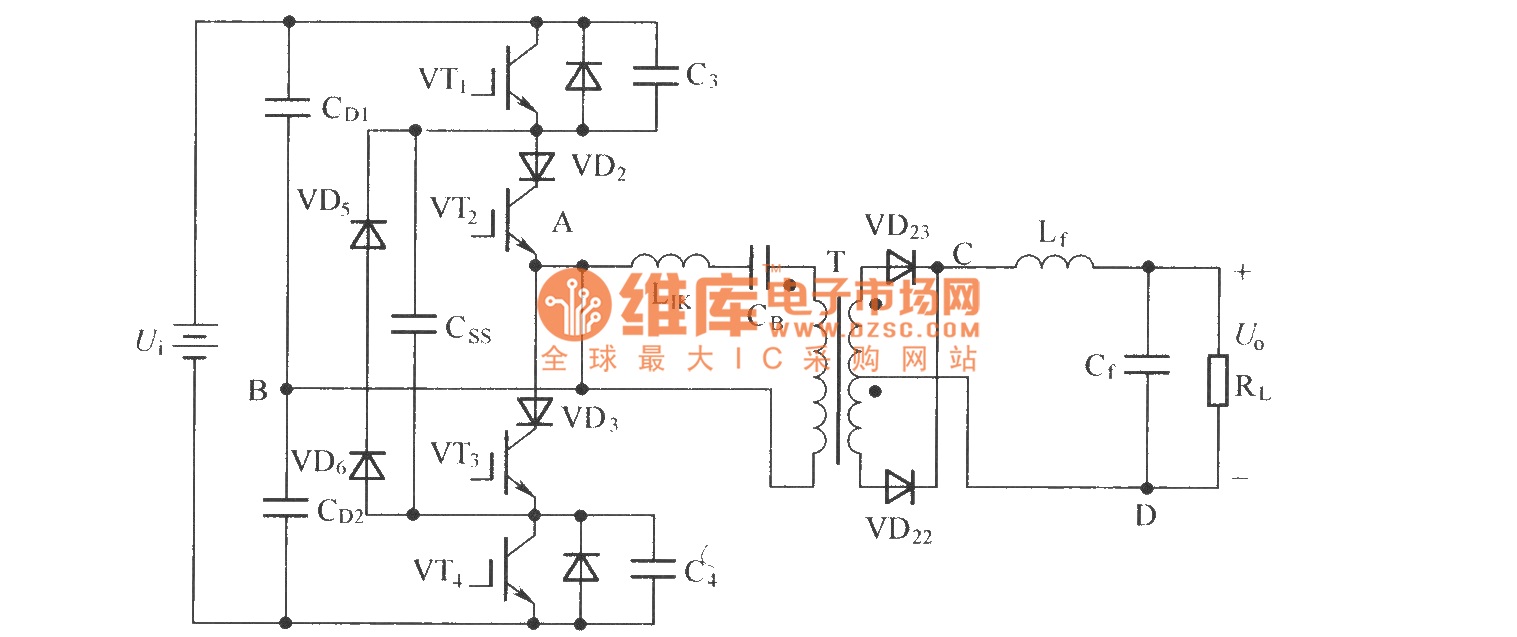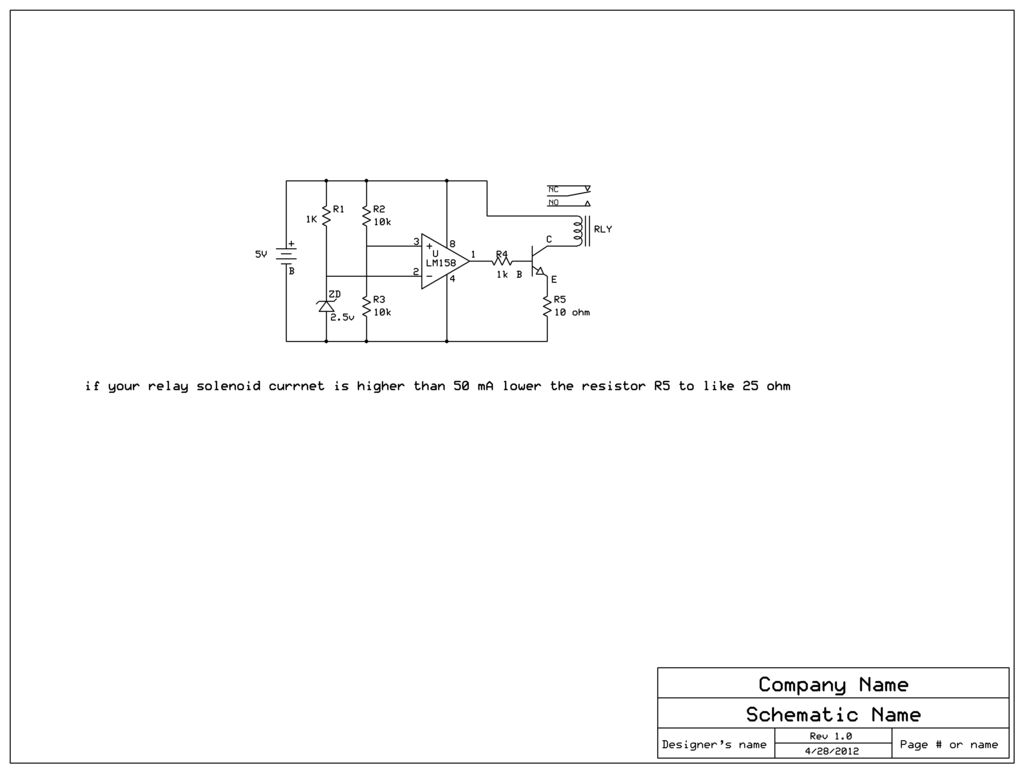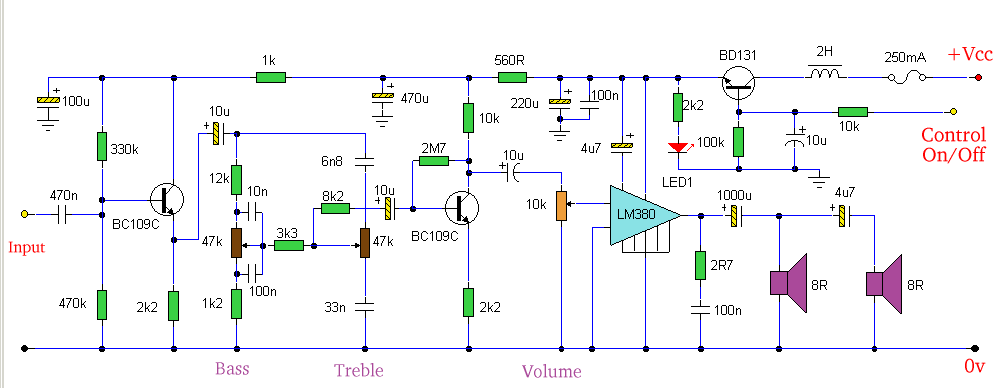
Zero-voltage zero-current switch three-level DC converter

To eliminate circulating current in a zero-voltage switch three-level DC converter during its zero state, a zero-voltage zero-current switch three-level DC converter circuit has been proposed. The primary distinction between this circuit and the standard zero-voltage switch three-level DC converter is the inclusion of coupling capacitance.
The zero-voltage zero-current switch three-level DC converter is designed to enhance efficiency by preventing undesirable current flow during the switching transitions. This is achieved through the strategic placement of coupling capacitance, which helps to stabilize the voltage levels and minimize voltage stress on the switching devices.
In this circuit configuration, the coupling capacitance serves a critical role in allowing smooth transitions between the converter states, effectively reducing the switching losses that are typically encountered in conventional designs. The three-level topology facilitates lower output voltage ripple and improved power quality, as it allows for a more gradual change in voltage levels compared to two-level converters.
The circuit operates by utilizing a combination of active and passive components, including MOSFETs or IGBTs as the primary switching devices, diodes for rectification, and inductors for energy storage. The coupling capacitance is strategically placed to connect the output of one stage to the input of the next, ensuring that the voltage across the switches remains at zero during the transition periods. This not only enhances the reliability of the converter but also extends the lifespan of the components by reducing thermal stress.
Overall, the zero-voltage zero-current switch three-level DC converter circuit represents an advanced solution for applications requiring high efficiency and low electromagnetic interference, making it suitable for use in renewable energy systems, electric vehicles, and other high-performance power electronics applications.In order to remove circulating current of zero-voltage switch three-level DC converter in zero state, we come up with kind of zero-voltage zero-current switch three-level DC converter circuit. The circuit is shown in the following diagram 1, the main difference between this circuit and zero-voltage switch three-level DC converter is: add coupling capacitanc..
🔗 External reference
The zero-voltage zero-current switch three-level DC converter is designed to enhance efficiency by preventing undesirable current flow during the switching transitions. This is achieved through the strategic placement of coupling capacitance, which helps to stabilize the voltage levels and minimize voltage stress on the switching devices.
In this circuit configuration, the coupling capacitance serves a critical role in allowing smooth transitions between the converter states, effectively reducing the switching losses that are typically encountered in conventional designs. The three-level topology facilitates lower output voltage ripple and improved power quality, as it allows for a more gradual change in voltage levels compared to two-level converters.
The circuit operates by utilizing a combination of active and passive components, including MOSFETs or IGBTs as the primary switching devices, diodes for rectification, and inductors for energy storage. The coupling capacitance is strategically placed to connect the output of one stage to the input of the next, ensuring that the voltage across the switches remains at zero during the transition periods. This not only enhances the reliability of the converter but also extends the lifespan of the components by reducing thermal stress.
Overall, the zero-voltage zero-current switch three-level DC converter circuit represents an advanced solution for applications requiring high efficiency and low electromagnetic interference, making it suitable for use in renewable energy systems, electric vehicles, and other high-performance power electronics applications.In order to remove circulating current of zero-voltage switch three-level DC converter in zero state, we come up with kind of zero-voltage zero-current switch three-level DC converter circuit. The circuit is shown in the following diagram 1, the main difference between this circuit and zero-voltage switch three-level DC converter is: add coupling capacitanc..
🔗 External reference





